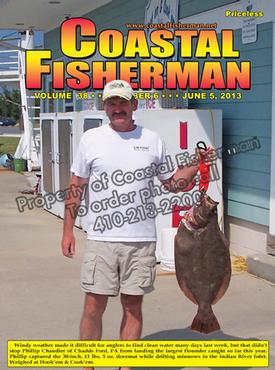


Article by Capt. Steve Katz
 Shore Power – Be Sure
Shore Power – Be Sure
Many of today’s boats have a shore power electrical system providing the convenience of household power when onboard. This is comprised of a power cord supplying Alternating Current (AC) power from land to the boat. This could be a simple, lightly loaded circuit to re-charge the batteries or heavily loaded circuits operating on-board systems such as HVAC, cooking, hot water, lighting, ice makers, bait freezers and more. The AC power system complements the Direct Current (DC) power system and batteries, commonly 12 volt, 24 volt or both. Unlike a home, many boats have two electrical systems that require special attention when operating, modifying or repairing. There are also overlapping usage of wire colors between the DC and AC systems that can confuse even experienced technicians. This week I want to talk about three aspects of shore power - safety, improvements and procedures.
SAFETY
It is almost impossible to buy a new hair dryer that does not come with a giant warning label that tells you not to use it while in the bathtub or around a wet environment. Boats are definitely a wet environment, although safety warnings on shore power systems are not as prominent or followed as they should be. A GFCI - Ground Fault Circuit Interrupter outlet has been popular in homes for years and is included in the American Boat Yacht Council (ABYC) standards for certain areas on boats. Similarly, for over 30 years, European marinas have had ground fault devices (RCBO) built-into the dockside power supply. Here in the United States, we have taken a slightly different approach in recent ABYC standards requiring a ground fault device (ELCI) on-board the boat, close to the shore power inlet connection. Both of the above methods provide ground fault protection for the entire boat – a great safety upgrade for existing boats. For those interested, a GFCI outlet provides a 5mA ground fault protection to an individual circuit where an ELCI provides a 30mA ground fault protection to the whole boat.
The reverse polarity indicator on the main electrical panel provides an indication that there is a problem with power supplied to the boat, possibly with the power cord, dock wiring, etc. The reverse polarity light/alarm, required to meet ABCY standards, indicates the reversal of the ungrounded (black) and the grounded (white) conductors. Connecting your boat to an improperly wired shore-power system can create potentially harmful conditions for personnel as well as creating damaging galvanic currents. An isolation transformer can eliminate this possibility and does not require a reverse polarity light/alarm.
Bonding (the electrical interconnection of many on-board metal components such as tanks, engines, railings, and fittings) may seem like a corrosion topic, but it is also part of the safety system for AC power. Do not confuse the green AC safety grounded wire with the green bonding wire. They are different systems with different wire gauge requirements but are interconnected on-board. This bonding can provide a path for an erroneous “hot” electrical current that will trip the breaker and stop the flow of electricity. Without this bonding, the breaker may not trip and the energized metal object could shock (electrocute) a person who touches the object and a ground.
This green wire in the shore power cord is very critical and should never be compromised. If the shore power cord green wire is not properly connected on land, an on-board fault could result in AC electrical current entering the seawater and possibly electrocuting anyone in the water near the boat. While this may be more lethal in freshwater, it is a danger in saltwater as well. Unlike residential wiring, the green and white wire are only connected together at the source of power, which is commonly on land at the dock (or on-board generator); this is to allow dangerous current on the green wire to leave the boat and enter the shore based ground system.
IMPROVEMENTS
If you are in the market to replace or upgrade your shore power cord (the popular twist-lock style cords were invented by Harvey Hubbell III in 1938), you might want to investigate some new styles of shore power connections that are reportedly easier to connect/disconnect and/or increases our safety. The SmartPlug and Easily Engaged Lock, (EEL) are improvements in the traditional shore power connections. According to the manufacturers, “The SmartPlug is a revolutionary shore power system designed to replace the outdated and problematic twist-type design in use today. It's intuitive to use and provides greater protection against loose connections and corrosion - the leading causes of shore power failure and fires”.
EEL ShorePower™ Marinco's new, patented locking system eliminates the need for the traditional locking ring, creates a watertight seal every time, and ensures a safer boating experience. While the EEL is compatible with existing inlets, the Smartplug requires a new matching inlet.
PROCEDURE
ABYC recommends the following safety procedure when connecting or disconnecting a shore power cord:
1) Turn off the boat's shore power connection switch before connecting or disconnecting the shore power cable.
(2) Connect shore power cable at the boat first.
(3) If polarity - warning indicator is activated, immediately disconnect cable.
(4) Disconnect shore power cable at shore outlet first.
(5) Close shore power inlet cover tightly
Shore power is nothing to take for granted. Check your shore power cords often, looking for corroded or burned connectors and monitor your electrical panel for abnormal conditions. Your boat will run better and you will create a safer environment for everyone.
Captain Steve Katz is owner of Steve’s Marine Service serving Annapolis and Ocean City, MD.